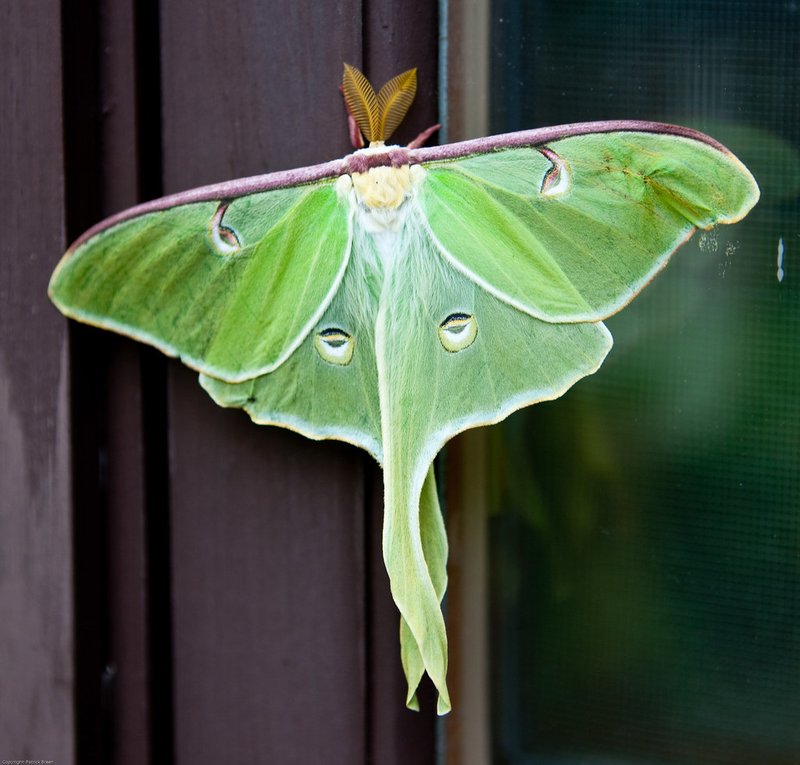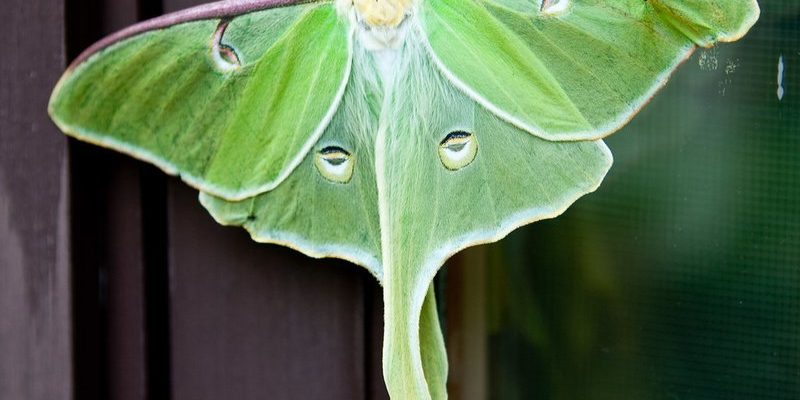
So, why should we care about the Luna Moth? Well, ecosystems are like a complex web where every creature plays a part. The Luna Moth, with its extraordinary life cycle and interactions with other species, helps maintain this balance. It’s more than just a pretty face; it’s a key player in the grand scheme of life. Let’s dive in and explore its role in the ecosystem, and I promise you’ll see moths in a whole new light.
Understanding the Life Cycle of the Luna Moth
The life cycle of the Luna Moth is something straight out of a fairy tale. It undergoes four main stages: egg, larva (caterpillar), pupa (chrysalis), and adult moth. Each stage is crucial, not just for the Luna Moth but for the wider ecosystem too.
Starting with the egg, which is usually laid on the underside of leaves, these tiny jewels are often hard to spot. Within a week or so, they hatch into vibrant green caterpillars. These caterpillars are not only adorable but they also munch on leaves, particularly from trees like sweetgum and birch. This feeding helps maintain plant health by encouraging new growth. Plus, it provides food for various predators.
After their caterpillar stage, Luna Moths pupate in a protective cocoon. This is where the magic happens. Inside, they transform into the striking adults we recognize. Eventually, when they emerge from their cocoons, they’re ready to mate and lay eggs, continuing the cycle. Each phase of their life cycle has a role in the ecosystem, creating connections between plants, moths, and other wildlife.
The Luna Moth as a Pollinator
Here’s the thing: while Luna Moths aren’t as famous as honeybees when it comes to pollination, they do play an essential role. When adult Luna Moths venture out at dusk, they’re on a quest for nectar from various flowers. In doing so, they inadvertently transfer pollen from one bloom to another, helping plants reproduce.
You might be wondering how this affects us. Well, many plants that Luna Moths help pollinate are vital for the food web. Their blooms attract other pollinators too. In a way, Luna Moths are like the unsung heroes of pollination. The next time you see a beautiful flower, it might just be a Luna Moth that helped it thrive.
Furthermore, the night-time activity of these moths aligns with many nocturnal plants that open up after sunset, ensuring that those blooms are pollinated at their peak flowering times.
Food Source for Other Wildlife
Luna Moths are also an important food source for various wildlife species. Birds, bats, and even small mammals rely on these moths as a meal. Think of them as a tasty snack in a rich buffet of nature. By providing sustenance for these predators, Luna Moths play a crucial role in the food chain.
For example, during their adult phase, these moths have fewer natural defenses. Their large size and bright colors may seem like a warning, but they still fall victim to hungry creatures. This feeding cycle not only helps keep predator populations healthy but also serves to control the Luna Moth population itself.
In turn, this balance is vital for maintaining biodiversity in the ecosystem. Predators and prey exist in a delicate dance, and without the Luna Moth, that dance may stumble.
Contributions to Soil Health
You might not think of moths as contributors to soil health, but they do their part. Luna Moths, especially in their caterpillar form, naturally break down plant matter as they feed. This digestion process helps return nutrients to the soil. When they eventually die or produce waste, these contributions enrich the earth, promoting healthy plant growth.
This nurturing of soil health creates a better setting for flora and ultimately supports broader wildlife. Stronger plants mean increased carbon sequestration and improved air quality, which are crucial for our environment.
By supporting the soil ecosystem, Luna Moths influence everything from root growth in plants to water retention. It’s like they’re tiny gardeners, helping to cultivate the very ground we rely on for food and resources.
Environmental Indicators
Luna Moths can be an excellent indicator of the health of an ecosystem. Their presence—or absence—can tell us a lot about the environment’s condition. Since they are sensitive to changes in their habitats, like pollution or habitat loss, monitoring their populations can provide insight into the overall health of the ecosystem.
If researchers start noticing fewer Luna Moths, it could signal issues such as pesticide use or loss of native plants they rely on. This sensitivity makes them crucial for environmental assessments.
In a way, keeping an eye on these beautiful creatures can also teach us about our impact on nature. It’s a gentle reminder that every action we take—big or small—can influence the web of life around us.
Conservation Efforts for Luna Moths
As enchanting as they are, Luna Moths face threats that endanger their populations. Habitat loss, pollution, and climate change are all significant challenges. Thankfully, conservation efforts are underway to help protect them.
One effective approach is restoring their natural habitats. By planting native trees and reducing pesticide use, we can create a welcoming environment for Luna Moths. Community awareness programs also play a vital role; the more people know, the more they can contribute to preserving these amazing moths.
Supporting local wildlife organizations can make a difference too. They often run initiatives aimed at protecting Luna Moths and their habitats. It’s a collective effort, and every bit counts.
The Beauty of Luna Moths
Finally, let’s not forget about the aesthetic pleasure Luna Moths bring to the world. Their vibrant colors and unique patterns can inspire awe in anyone who sees them. They remind us of nature’s beauty and the intricate connections that exist in our world.
Next time you spot a Luna Moth fluttering through the twilight, take a moment to appreciate its role in the ecosystem. From their life cycle to their contributions as pollinators, food sources, and soil enhancers, these moths are incredible creatures deserving of our admiration.
As we continue to learn more about the Luna Moth, we gain a better understanding of the delicate balance of our ecosystems. The more we appreciate their role, the more we’ll be inclined to protect them and the environments they inhabit.
In conclusion, the Luna Moth stands out not just for its beauty, but also for its contributions to the health of ecosystems. By playing various vital roles throughout its life cycle, it’s an essential part of the natural world. So, the next time someone tells you that moths are just pests, you can proudly share the magical world of the Luna Moth and its vital place in our ecosystem!

